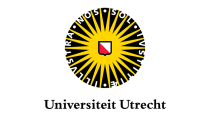Resource information
Land use change is a central issue in the sustainability debate, because of its impacts on e.g. climate change, water availability and quality, soil quality and erosion, and biodiversity. Continuing population growth, shifting diets towards higher meat consumption and increasing bioenergy demands call for the exploration of possibilities for sustainable land use change pathways with minimal negative impacts. Land use change models are tools that support such explorations by projecting the spatial dynamics of a predefined set of land uses over a given period. Designing land use change models is not straightforward, because the dynamic processes and feedbacks in the land use system are complex and only partially understood. This results in uncertainties in model structure, inputs and parameters, which propagate to the land use change projections and derived impacts. In this thesis, methods are developed to quantify and reduce uncertainty in land use projections. First, the uncertainty in each model component is quantified. Next, the PCRaster Land Use Change model (PLUC), coupled to a Monte Carlo (MC) analysis scheme, is applied to evaluate the effects of these uncertainties on simulated land use changes. Such a full scope error propagation assessment is new in land use change modelling. Generally, we find that: 1) output uncertainty is attribute dependent and 2) output uncertainty is scale dependent, decreasing from lower to higher aggregation levels. In general, non-spatial inputs determine output uncertainty at high aggregation levels and spatial inputs determine output uncertainty at low aggregation levels. To reduce the uncertainty in land use projections, a particle filter is coupled to PLUC. A particle filter is a data assimilation technique that updates prior knowledge about model structure, inputs and parameters by integrating observational data into the model during runtime. The particle filter considerably reduces output uncertainty, e.g. for a case study for São Paulo, Brazil, the 95% confidence intervals of output land use metrics were reduced by at least a factor 3, compared to a run without the particle filter. Yet, even with reduced uncertainty, the uncertainties in land use projections are large, especially at local scale levels (up to 100 x 100 km2) and for long time frames (more than a decade). We conclude that the value of spatially explicit land use change models for answering questions about the future directions the system at local scale levels or for long time frames is limited. For policy implementation strategies this implies that the confidence interval of a land use attribute is often so wide that it is likely to straddle a legislation threshold. Therefore, we deem threshold evaluation for land use indicators a very questionable practice. Independent of the implications of these large uncertainties, we at least created the conditions for policy makers to account for uncertainty in their decisions by presenting the robustness of the land use projections in an understandable way. Communication of uncertainties in land use change models should become common practice, because the users of the land use projections should have the opportunity to grasp the (un)reliability of these projections.



